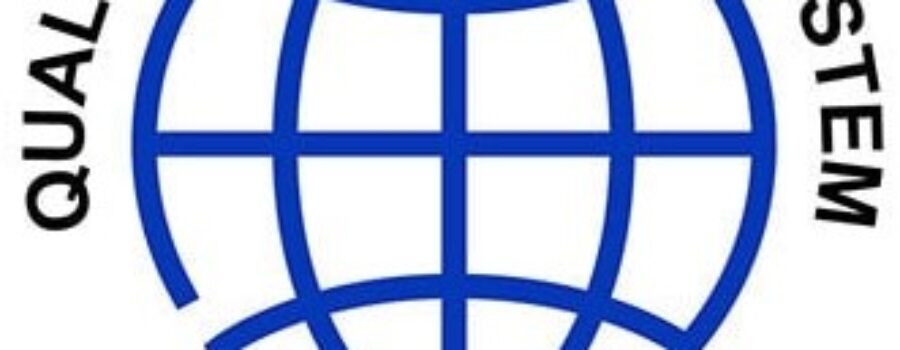Implementing ISO 17025, the international standard for the competence of testing and calibration laboratories, is a substantial project that requires thorough planning and resources. Here are key considerations to prepare for a successful implementation:
1. Understand the Scope and Requirements of ISO 17025
- Familiarize yourself with the standard’s requirements, including both management and technical requirements, and how they apply to your organization’s specific scope of testing or calibration. A good starting point is to purchase the standard and read it, it can be found on the ISO official website.
- Evaluate the relevance of ISO 17025 to your laboratory’s operations, customer requirements, and any regulatory expectations.
2. Perform a Gap Analysis
- Conduct a comprehensive assessment of your current operations, systems, and processes to identify gaps relative to ISO 17025 requirements.
- Focus on areas like quality management, calibration procedures, documentation, staff competencies, and equipment adequacy.
- Use the results of the gap analysis to prioritize the actions needed for compliance.
3. Define Clear Objectives and Goals
- Determine what you want to achieve by implementing ISO 17025 (e.g., regulatory compliance, market access, customer confidence).
- Set measurable goals for the certification process, including timeframes, resource allocations, and specific outcomes.
4. Secure Leadership Commitment
- Ensure top management is fully committed to the implementation, as their support will be crucial for securing resources, guiding cultural changes, and maintaining momentum.
- Leadership should understand the resource and time investment needed, including any potential impacts on daily laboratory operations.
5. Allocate Sufficient Resources
- Prepare for the investment of time, finances, and manpower required. This might include hiring additional personnel, investing in new equipment, or upgrading existing systems.
- Consider appointing an internal ISO 17025 project manager or team responsible for overseeing the entire implementation process.
6. Develop or Update the Quality Management System (QMS) for ISO 17025
- ISO 17025 requires a well-documented QMS. This includes establishing a quality manual, control procedures, and documented processes for testing or calibration.
- If a QMS is already in place, assess it against ISO 17025 standards and make any necessary updates.
7. Documented Procedures and Policies
- Ensure that laboratory procedures and policies are well-documented, clear, and aligned with ISO 17025 requirements.
- Focus on critical areas such as quality control, equipment calibration and maintenance, sample handling, and data reporting.
8. Invest in Training and Competency Development
- Train all staff on ISO 17025 requirements, emphasizing the importance of documentation, accuracy, and adherence to standard operating procedures.
- Ensure that technical staff, including analysts, technicians, and auditors, are competent in their roles and have access to continuous professional development.
9. Establish Equipment and Calibration Protocols
- ISO 17025 requires strict control over laboratory equipment, including regular calibration and maintenance.
- Document calibration procedures, establish schedules, and create records to demonstrate compliance. This is critical for maintaining measurement accuracy and repeatability.
10. Implement Document and Record Control
- Develop a robust document control system for managing and updating SOPs, forms, logs, and other relevant documents.
- Maintain records meticulously to show compliance during audits. ISO 17025 audits will review how well records are controlled, updated, and stored.
11. Prepare for Internal Audits and Management Reviews
- Internal audits are essential to verify the effectiveness of your ISO 17025 implementation and identify areas for improvement.
- Schedule regular management reviews to assess the performance of the QMS and make informed decisions on corrective actions or improvements.
12. Plan for Proficiency Testing and Interlaboratory Comparisons
- ISO 17025 requires laboratories to demonstrate technical competence through proficiency testing or interlaboratory comparisons, where applicable.
- Plan how and when your lab will participate in these activities to show accurate and reliable test or calibration results.
13. Risk Management and Corrective Actions
- Implement a risk-based approach as outlined in the standard to identify potential risks in laboratory operations and take preventive actions.
- Establish a process for identifying non-conformities, conducting root cause analyses, and implementing corrective actions to prevent recurrence.
14. Prepare for the Accreditation Process
- Contact an ISO 17025 accrediting body to understand the requirements, costs, and timeline for certification.
- Review pre-audit requirements, such as submitting documentation and preparing for an on-site audit, to ensure you’re ready for the formal evaluation.
15. Communication with Stakeholders
- Inform customers, regulatory bodies, and other stakeholders about your plans to implement ISO 17025 and seek feedback where appropriate.
- Regularly update stakeholders on the progress, especially if certification impacts them directly.
16. Monitor, Measure, and Improve Continuously
- ISO 17025 is not a one-time certification; it requires ongoing monitoring, measuring, and improvement to maintain compliance.
- Regularly review lab performance metrics and make adjustments to keep up with evolving requirements and industry standards.
By considering these aspects in advance, your organization will be better prepared for a successful ISO 17025 implementation that not only achieves accreditation but also supports the ongoing quality, accuracy, and reliability of laboratory operations.




